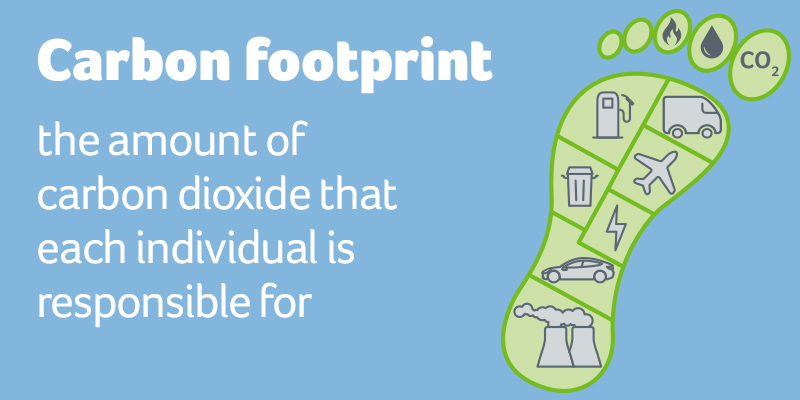What is a carbon footprint?
Busting the babble on your carbon footprint
This is probably the most common reference of the term “carbon footprint” – the amount of CO2 that we humans are responsible for. This could be as individuals, families, households, but also businesses, organisations and countries.
If we break it down further, practically everything has a carbon footprint: your car, your possessions, your clothes – heck, even the electronic device that you’re reading this on. But why is it important?


The dictionary says…
The dictionary definition of a carbon footprint is “a measurement of the amount of carbon dioxide produced by the activities of a person, company, organization, etc.”
Tackling climate change isn’t something that can be done individually – we need everyone to play their part and contribute to reducing their impact on Earth. As we always say here at SaveMoneyCutCarbon – little changes add up to a massive impact.
The best way to do this is to take your everyday carbon emissions into consideration.
Nearly everything we do releases carbon
It’s true when you really think about it: and it’s not just things like your car journeys or your gas and electric. It’s the products you buy, the food you consume, the waste you generate. All of these activities have a little (or rather not so little) carbon footprint associated with them. How big these footprints or emissions are depends on a huge number of factors, but lets break it down easily for you.
Let’s say you want to bake a pie. Now, stay with me here – you’re stuck at home, and fancy some comfort food or a fun (well, subjectively so!) activity to do. Your pie will have a carbon footprint attached to it based on:
- resources used by the farms/organisations to grow the fruit or prepare the ingredients of your pie – sugar, pastry, flour, butter etc.
- shipping of the fruit and other ingredients to your chosen supermarket (high especially where produce is from abroad!)
- Your petrol or diesel consumption to go buy the ingredients (or emissions from home delivery)
- The emissions from cooking said fruit pie – energy of your fridge and oven, water to wash the dishes etc.
- Emissions from any wasted pie that’s either gone to landfill or been put in your food recycling (differs locally)
The above is applicable to anything that you buy or make really!
You can control your emissions and reduce them
You can definitely increase or decrease your carbon footprint with your everyday choices. For example, buying your produce for your pie from a farmers market or farm shop local to you helps reduce shipping emissions. Or choosing to buy organic produce, that hasn’t had pesticides sprayed into the environment.
Let’s shake off our our fruit pie example. You can shop second hand, or as the kids say nowadays, go “thrifting“. Sell second hand too – you can stop doing short journey’s in your car that you could walk or cycle (one of my first habits to curve!). Make sure your home’s energy emissions are as reduced as possible.
Perhaps the easiest of all is shopping smarter for your essentials around your home – that’s where SaveMoneyCutCarbon can help.

